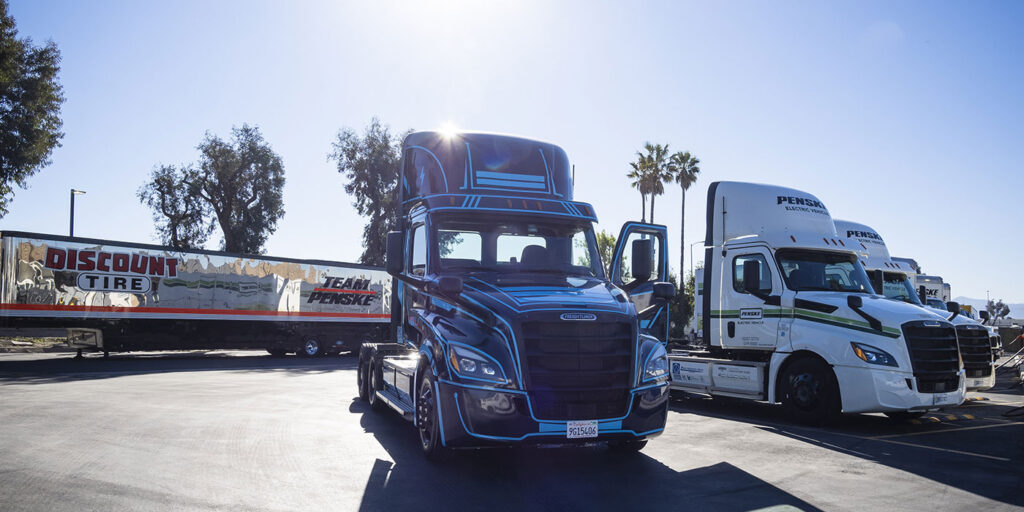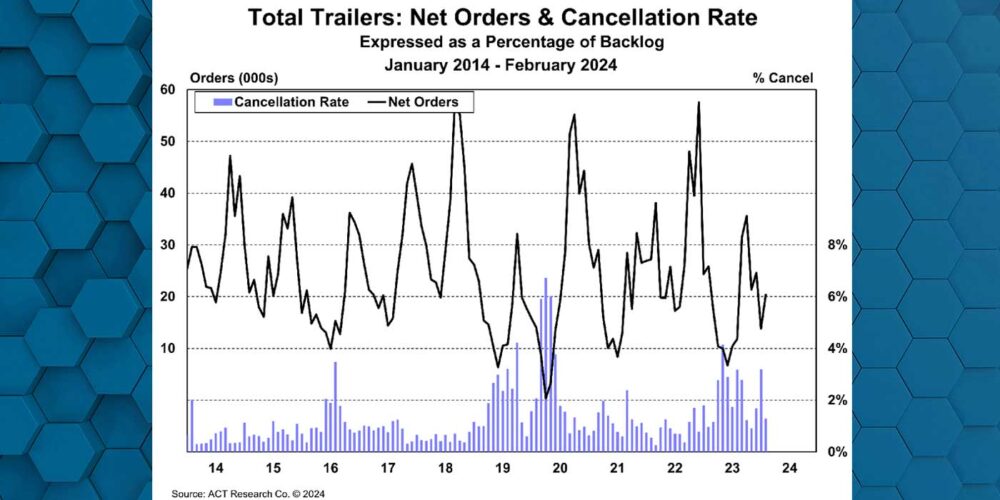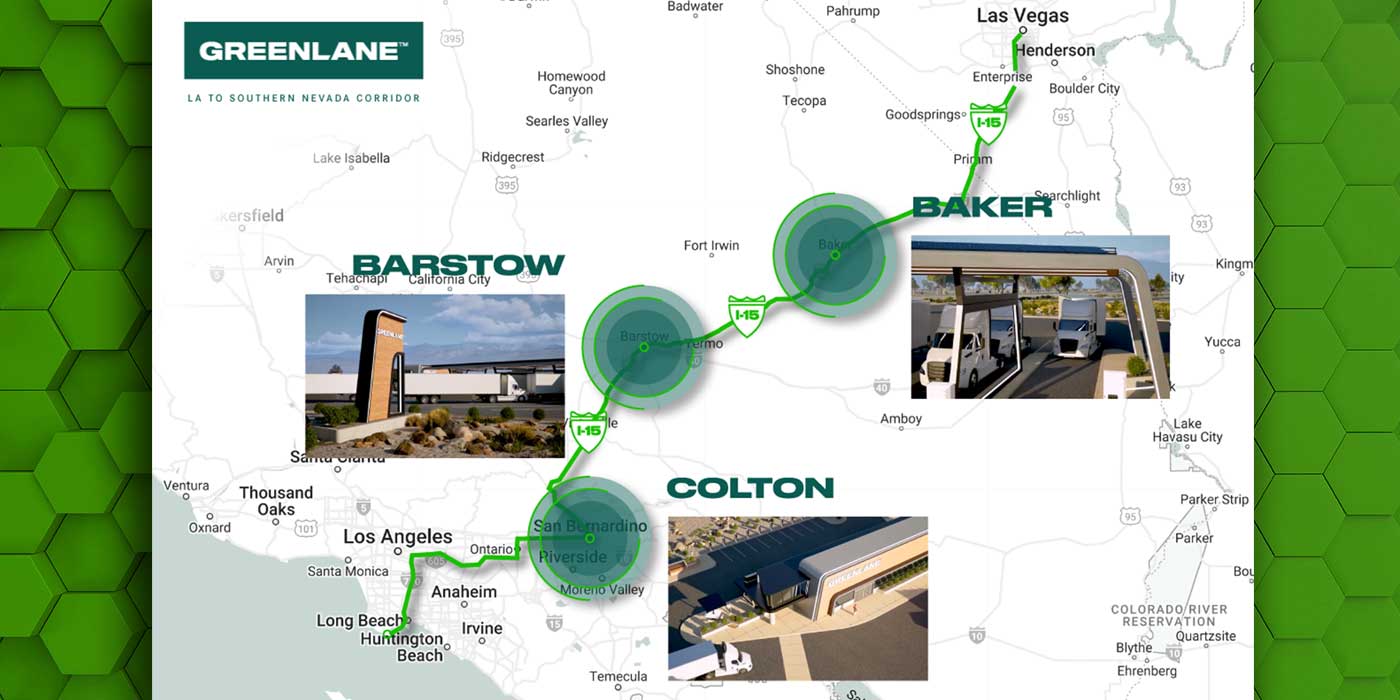Penske has been battling for pole position as a top commercial electric vehicle operator since well before orders for electric trucks opened, jockeying with other big names like NFI, Knight-Swift, Schneider, Ryder, J.B. Hunt, and UPS. The truck rental and leasing giant was part of Freightliner’s Electric Innovation fleet, influencing design and product development decisions as the trucks came into the market. They’ve helped Freightliner turn the collective odometer for its eCascadia and eM2 electric trucks past one million miles. While the bulk of the fleet world is working on wrapping their arms around initial infrastructure needs and route planning to meet application demands, Penske is already looking down the road to the next set of mile markers on the road to wider EV usage.
“Our next step is that as vehicles start to come to production, we need to help enable our customers to operate those vehicles,” said Bill Combs, vice president, sustainability, Penske Transportation Solutions. “As vehicle availability grows, the infrastructure for charging needs to grow. That’s the biggest obstacle. The infrastructure currently doesn’t exist.”
What does exist is Penske’s seven charging locations across southern California, which are networked together, and that network is positioned for growth.
“We can dial into a dashboard and see operationally how those systems are all working, how much energy they’re dispensing,” Combs said. “Now the question is: How do we maximize funding to build infrastructure in the right places and keep the trucks running as they come off the assembly line?”
Mary Aufdemberg, general manager, market development, Daimler Trucks North America had a thought to share:
“We have invested in e-consulting,” she explained. “One of our roles in the industry, right now, is helping customers understand how to transition to electric vehicles because there will not be a snap of the finger and one person’s fleet is transitioned from a combustion engine into a zero-emissions vehicle.”
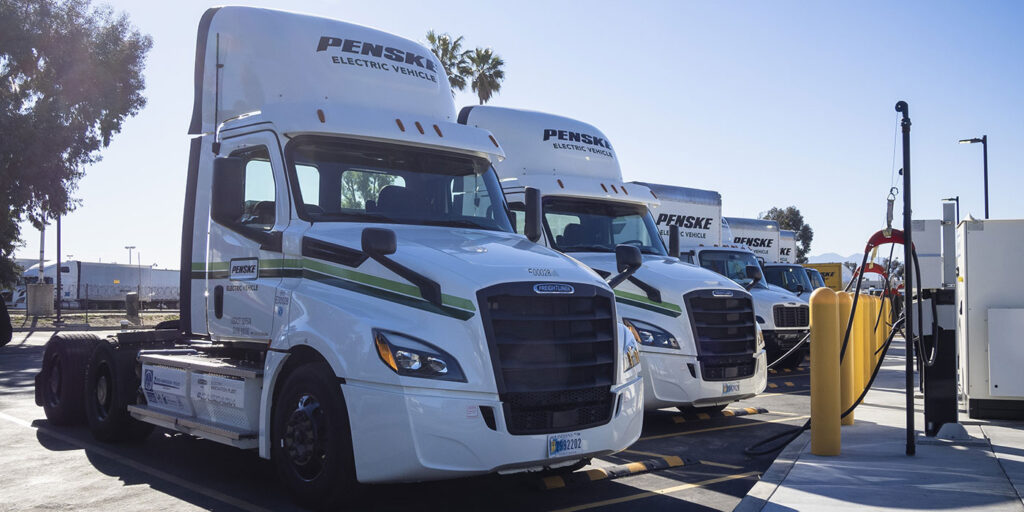
Growing charging infrastructure isn’t the only change on the horizon with the coming of electric trucks. EV adoption might also mean shifting application adaptation. Take Team Penske hauling its No. 2 Discount Tire Ford/Freightliner trailer to the Los Angeles Memorial Coliseum with the Freightliner eCascadia, for example. A great PR headline to be sure, but more importantly, it shows how a Class 8 electric truck application meets regulations that restrict internal combustion engine use within city limits.
“Team Penske’s left Mooresville, N.C., and they’re going to drive across the country until they get to the beltway of L.A.,” Combs explained. From there, the load will transfer to the battery electric Freightliner eCascadia as it rolls large toward the Los Angeles Memorial Coliseum. “We can do this in any metro area where there is poor air quality due to emissions issues. Whether it’s in the applications that we’ve used the eCascadia in the last three years of starting at a distribution center and then delivering out to 12 food and beverage locations six nights a week or bringing an electric truck hauling a race car that final mile with zero tail-pipe emissions to the track, the concept last-mile helps exemplify that whole mode of transportation.”
“Electrification in the trucking industry is still prime right now for regional haul,” Aufdemberg agreed. “From this NASCAR application perspective, there is certainly long-haul, cross-country hauling that will happen, but there’s a portion of it that’s regional.”
It’s a cool example of an electric truck application “What if?” becoming a reality, but what will it take to bring this to the industry at large?
“There are multiple things within the industry that need to happen and need to continue to evolve for electrification to become the dominant propulsion for trucking,” Aufdemberg continued. “It’s clear that in the near-term we still need incentives; incentives are a part of the strategy for that early adoption as we start to move into tipping points.
“We need more investment in infrastructure from both a private and a public infrastructure perspective. We also know that we need some more resiliency in upgrading to electric grids across the country.”
How is this different from other diesel-alternatives?
Clearly electrification in the commercial transportation space is a heavy lift, and one that some may say we’ve attempted before. (We’re looking at you, natural gas.) But there’s an energy around electrification (puns always intended). The difference this time around is it’s shaping up to be more of an industry sea change because we’re staring down the barrel of confirmed climate change consequences.
Randy Ryerson, vice president, marketing, communications and events, Penske Transportation Solutions, lays it out for us:
“The entire industry is looking more towards sustainability. There are a lot of theoretical electric trucks out there. The Freightliner eCascadia is a real one. It’s charging at the Penske Truck Leasing facility. It’s working with real customers hauling real freight to make their deliveries. We have both our logistics business at Penske using these vehicles, as well as our lease customers, which are other companies hauling freight.”
“There’s a lot more belief that it’s important to reduce emissions, and we’re talking zero emissions out of the tailpipe,” Combs added. “The elephant in the room with zero tailpipe is that the energy is created somewhere that potentially burns fossil fuels. It’s definitely an all-hands-on-deck movement, but by starting with the vehicle and reducing emissions at the tailpipe, we can start to focus on managing a lot of vehicles’ power plans as opposed to power plans separate on each vehicle.”
Aufdemberg brings this story down the home stretch with the final word on decarbonization efforts:
“Technology continues to evolve, and battery technology is the space where we can see the path to having good total-cost-of-ownership for our customers,” she said before echoing that this issue is bigger than just trucking. “You’re going to start to see the build-out of the infrastructure; there’s much larger acceptance happening in the electrification space.”
And now, the real question
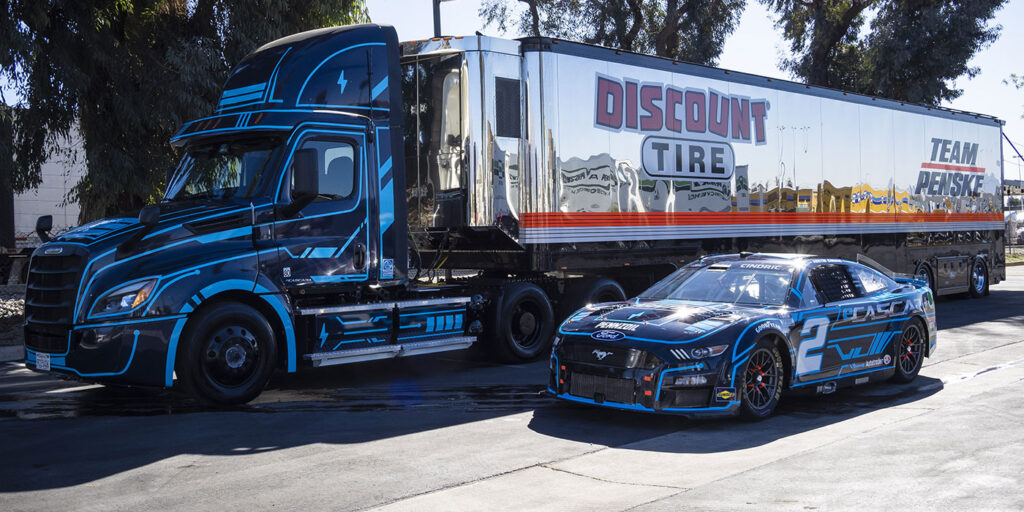
With Team Penske hauling its No. 2 Discount Tire Ford/Freightliner trailer to a NASCAR race with the battery electric Freightliner eCascadia, it begs the question:
Could the Freightliner eCascadia beat the No. 2 car in a race? What about off the line?
“If Penske’s running it, it might,” Ryerson said with a laugh. “Our techs can do anything. I’ll leave it at that.”
One thing is certain: The race to grow EV usage in commercial applications is on.

